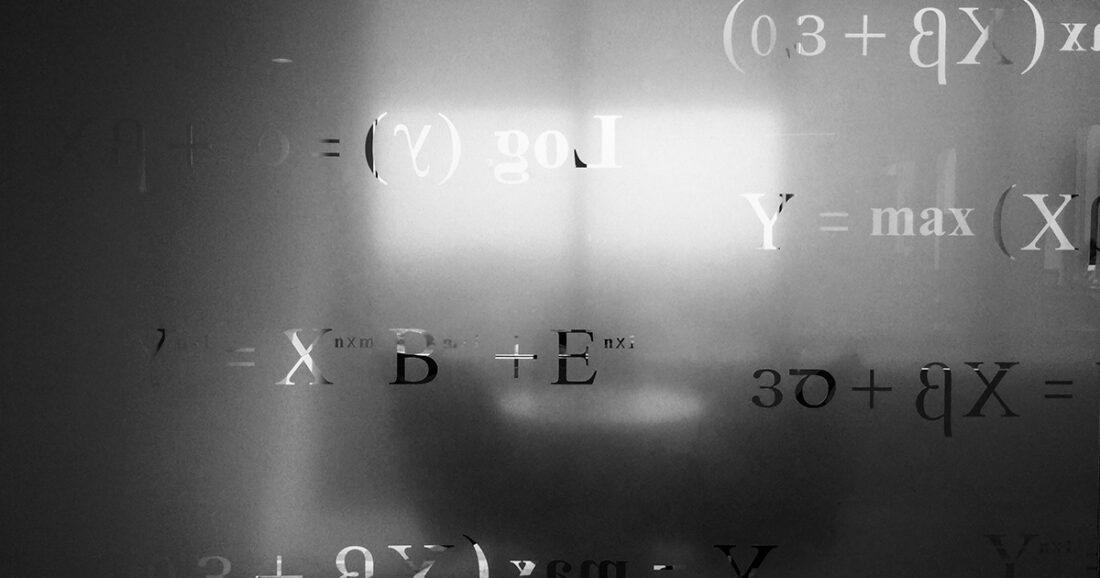Aristotle, Anselm, Aquinas, Liebniz, and William Lane Craig provide famous reasons to believe that God exists. Less well known is a way proposed by the African intellectual Augustine. In his fantastic book Five Proofs of the Existence of God, Edward Feser explains this argument at length. Inspired by Augustine, let’s begin with the reality that 2+2=4.
Some realities exist in matter. A house is made of wood, nails, and cement. A dog has fur, muscles, and bones. Other realities exist in a mind. My memories of seeing the Grateful Dead in concert and of running track against Harvard exist in my mind. Your beliefs about dogs and about chocolate exist in your mind.
Does the reality of 2+2=4 exist in matter or in mind? Well, material realities have a particular weight, length, and density. But the reality that 2+2=4 does not have a weight, a length, or a density. So, the reality that 2+2=4 does not exist as a material object.
Moreover, material realities depend on matter for their continued existence. When the snow melts, the snowman is gone. But 2+2=4 is not a reality that would cease to exist if someone burned all the math books. Mathematical truths can be represented in written symbols or spoken words. But the reality of mathematical truth does not depend on the representation of this truth. The reality of 2+2=4 was true before anyone wrote it down or said it. So, the reality that 2+2=4 does not exist as a material object. Science gives us objective truths that are independent of the human mind, making our technology possible.
Rather, this truth is a mental reality that exists in my mind and in yours. Mental realities depend on a mind for their existence. If my mind is destroyed, gone will be my memories of playing pick-up games at Northwest soccer camp with Michelle Akers and practicing jiu jitsu with Royce Gracie. If your mind is destroyed, your knowledge of your mom and your favorite food is destroyed along with it.
Yet, the reality that 2+2=4 would not be destroyed, even if every human mind were destroyed. It was true before any human being knew about it. It would remain true even if all human beings ceased to exist. Mathematical realities like 2+2=4 are timeless, unchanging, intelligible, and true. So, since the reality of 2+2=4 is a timeless and unchanging reality, it does not depend upon a mind that is contingent, in time, and changeable. Rather, the reality of 2+2=4 must exist in a mind that does not come into existence and cannot fall out of existence, since 2+2=4 does not begin to be true, nor could 2+2=4 ever stop being true.
Moreover, 2+2=4 is not the only mathematical reality. Indeed, there are infinite mathematical realities simply in terms of addition (3+3, 4+4, 5+5, etc.). There are countless more mathematical realities of subtraction, multiplication, division, algebra, calculus, etc. Indeed, there are innumerable truths that are timeless, unchanging, and intelligible. But only an infinite mind can know infinite realities.
So it follows that there must exist a mind that is outside of time, not coming into existence, not having the possibility of going out of existence, which knows infinite realities. The word commonly used in English for a necessarily existing, eternally understanding, and infinitely knowing mind is “God.”
Now, at this point, someone might reply that 2+2=4 is not in fact an objective reality grounded in matter or in a mind. According to this view, 2+2=4 is merely a collection of symbols or ideas that human beings just made up. Math is no more real than Cinderella’s fairy godmother. Math is just a fictional story and does not give us factual truth.
But if math is not real, then science is not real. As Paul Davies points out, “The laws of physics . . . are all expressed as mathematical equations.” Take, for example, Newton’s second law of motion: force equals mass times acceleration. Or consider Einstein’s E=mc2. These formulas depend upon the truth of multiplication. If mathematics does not give us objective truth, then science cannot give us objective truth.
In fact, the fictional story is that mathematics is merely words or ideas that human beings just made up like a fairy tale. Cinderella’s fairy godmother cannot physically move a Boeing 747 through the air from Los Angeles to Boston. Science can.
Science gives us objective truths that are independent of the human mind, making our technology possible. When humans realized that the sun is hotter than ice, they understood an objective truth. So, too, when the first human realized that 2+2=4, this person discovered an objectively true reality. Science is real. So math must be factual not fictional.
In sum, it is an objective reality that 2+2=4. Mathematical realities don’t exist as material objects with color, shape, and weight; rather, they exist in your mind and my mind. Mental realities depend on a mind for their existence. But the reality that 2+2=4 (like countless other mathematical facts) is a timeless reality and an unchanging truth, so it cannot depend upon minds like ours that come into existence and can go out of existence. So, there must exist a mind that is necessarily existing, eternally understanding, and infinitely knowing. This mind Augustine calls God.
This article appeared first on Word on Fire.
Dr. Christopher Kaczor is the Honorary Professor for the Renewal of Catholic Intellectual Life at the Word on Fire Institute. He is also Chair of the Department of Philosophy at Loyola Marymount University, the author of sixteen books, and a proud Pacifica parent.
